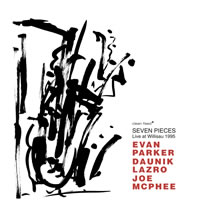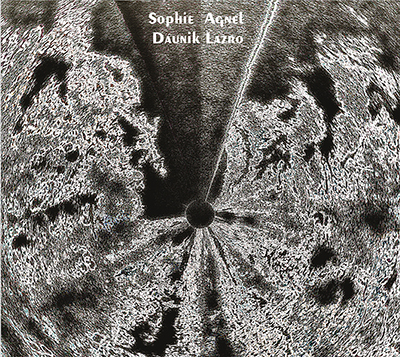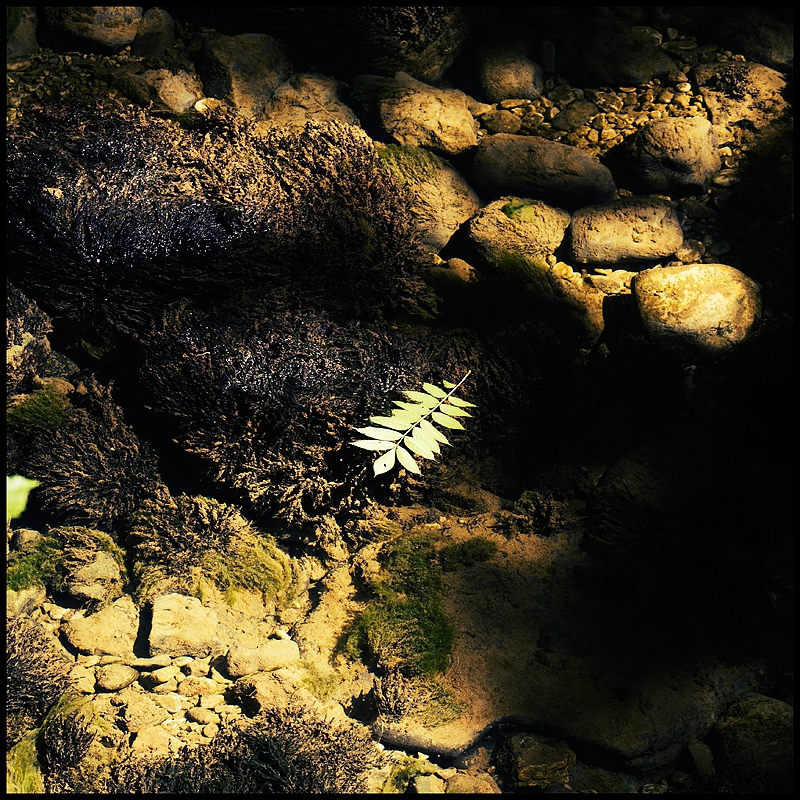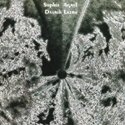Not as potentially world-altering as François Fillon’s – as well as Donald Trump’s – budding bromance with Vladimir Putin, a Moscow audience’s rapt attention to this superior improvisational program here indicates more favorable axioms. Consisting of six tunes performed by French improvisers, saxophonist Daunik Lazro and pianist Sophie Agnel, Marguerite d’Or Pâle confirms the universality of music, despite the post-Soviet-Gallic political climate. More crucially, in this case, it confirms the high standards of committed French musicians that are recognized by international audiences.
Decades of Soviet Realism decrees doesn’t seem to have dulled locals appreciation for the unusual, and except for applaud at the completion of the program, audience members are as quiet as you would find in any Western arts space. Like properly constituted soft drinks offered to consumers only familiar with imitation pop, sophisticated Angel and Lazro are the real thing(s) able to emphasize lines ranging from energetic swing to the most arduous timbral probing with the same off-handed skill. A member of the Orchestre National de Jazz, the pianist has also worked with everyone from guitarist Olivier Benoit to drummer Steve Noble. Meanwhile Like similar Gallic iconoclasts in film and literature, tenor and baritone saxophonist Lazro has gone his own way since the mid-1970s, working with figures such as Joe McPhee, Joëlle Léandre and Carlos Zingaro.
This time, the two present a program that begins with the equivalent of sprinters pacing and stretching before a race. Working their way up from key ruffling and smearing tones at the top of “Avec Ki” the pianist is soon investigating the insides and outsides of the piano with the vigor of a child at day care. Meanwhile the saxophonist squeezes out unexpected textures from his horn with toothpaste-like consistency and layering. Key clipping or sounding a reflective continuum, Agnel can match Lazro cry for cry and resonation with resonation, or choose to be a bystander, offering random encouragement via singe note squeezes besides the saxophonist nephritic vocalizing, altissimo screams and tone warping.
Relaxing into a sonic harvest of ripened piano movements coupled with saber-sharp baritone signs on the concluding “Ochi Chorye” the two invest the recital’s climatic centre section with every manner of strategies and surprises. Deep breathing and gobbling eruptions from Lazro on “Ma-Ox-Am” find Agnel’s playing as ferocious as if she was practicing mixed martial arts, culminating in stops, plucks and pricks of the piano strings that segment sax trills into even thinner mewls. Ultimately the penultimate “Bbystro” creates a whole cloth of sonic judders that are equal parts top-of-range reed moos and gasps and soundboard thwacks plus kinetic key slides that usher in the mellow conclusion.
Agnel’s and Lazro’s perceptive real-time invention certify their designated skills. Concurrently the idea that musical barrier breaking may overcome national difficulties is suggested.
—Ken Waxman
Track Listing: 1. Avec Ki 2. Avec Ka 3. Cat’s Shoe 4. Ma-Ox-Am 5. Bbystro! 6. Ochi Chorye
Personnel: Daunik Lazro (tenor and baritone saxophones) and Sophie Agnel (piano)
Sophie Agnel + Daunik Lazro
Marguerite D'Or Pâle
Fou Records FR CD 21
Daunik Lazro + Joëlle Léandre + George Lewis
Enfances à Dunois le 8 janvier 1984
Fou Records FR CD 18
Evan Parker + Daunik Lazro + Joe McPhee
Seven Pieces: Live at Willisau 1995
Clean Feed CF397CD


 French saxophonist Daunik Lazro has been a key figure in European free jazz and improvised music for forty years. These three recent releases demonstrate the quality of his work in different contexts over the past thirty years, as well as touching on shifting approaches in the music.
French saxophonist Daunik Lazro has been a key figure in European free jazz and improvised music for forty years. These three recent releases demonstrate the quality of his work in different contexts over the past thirty years, as well as touching on shifting approaches in the music.
Enfances à Dunois le 8 janvier 1984 presents Lazro, exclusively on alto, along with Joëlle Léandre (on bass and vocals) and George Lewis (on trombone and toys) in a series of duos and triosthat are at once provocative and playful in the extreme, at times with the effect of radio dial twirling. 21 minutes of this 57-minute performance was released in 1985 as part of Lazro’s two-LP set Sweet Zee on HatHut (the other sessions had an international cast that included American cellist Tristan Honsinger, Japanese trumpeter Toshinori Kondo and Portuguese violinist Carlos Zingaro). The restored concert gives a view of the music’s depths as well as its variety.
The performance’s brief events present musics of radically different shape. “Enfances 2” has Léandre practicing a kind of sprechgesang; after a few seconds of initial orientation, “Enfances 3” passes through a free-bop phase of light alto and trombone then goes on to other dimensions. Each piece is an explosion of different textures: there are different vocal and verbal intrusions, whether poetic or operatic; a whistling saxophone and chanson find momentary unison; bass sounds range from factory-noises to concert hall cello or violin elegance; trombone events range from trumpet register to gastric noise; sounds that suggest unlisted instruments (e.g. alto clarinet) occasionally arise.
The long segments – “Enfance 5” stretches to nearly 20 minutes – are both Dadaist playground and psychodrama in which any sonic event, including near-silence, is possible, and none is more likely than another, whether it’s Lazro’s soaring, Ayler-inspired melodies and choked whistles or Lewis’s speech-like muted episodes. In one particularly fine moment, Léandre supports a Lewis trombone oration with bowed walking bass (a creative feat as well as a technical one); elsewhere, Lewis lends a duck-quack mouthpiece obbligato to a pensive Lazro interlude. “Enfance 6” features the trio’s most sustained creative interaction, dense play that begins with Lazro and Lewis in duet to be eventually joined by Léandre supplying further forward momentum.
Seven Pieces: Live at Willisau 1995 documents a fine trio of three saxophonists who are also contemporaries – Lazro (born 1945), Evan Parker (1944) and Joe McPhee (1939). In 1996, material from the same tour was released eponymously on the Vand'Oeuvre label. The new release comes from a recently discovered cassette. If improvised music has at times suffered a certain surfeit of saxophones, the three heard here are models of taste and invention, consistently varying dynamics and approaches.
If the lineage of Ayler and Coltrane is inevitable, it’s entirely positive here, as in the cascading finale of “To Rush at the Wind” with Parker on tenor, Lazro on alto and McPhee on pocket trumpet. The Ellingtonian roots are less expected. The trio is at its lightest on the opening “Echoes of Memory,” emphasizing higher pitched horns – Parker and McPhee’s sopranos and Lazro’s alto. The dovetailing lines reveal consistent close listening, with lines frequently gathering in concluding unisons. Those Ellington suggestions are picked up with greater insistence later. On “Broadway Limited,” the extreme upper registers of Parker and McPhee’s soprano’s eventually give way to Lazro’s rough-hewn baritone, The finest of these moments is “Concertino in Blue”: it begins with Parker on tenor and McPhee on alto clarinet using circular breathing to play drones at the threshold of hearing, while Lazro creates a rich, lyric tapestry with his baritone’s lower register, a contemporary equivalent of Harry Carney.
The joy of this trio is that there’s a kind of excess of real contrapuntal content. It’s still densely musical when members lay out, whether it’s for a tenor/alto duet by Parker and Lazro (the two somehow suggesting a third voice) or Parker playing a characteristic soprano solo in which harmonics and lines multiply to create a choir of one. Recorded little more than a decade after the iconoclastic Enfances, Seven Pieces seems to reimagine traditions.
Marguerite d'Or Pâle (the CD invokes Mikhail Bulgakov’s wondrously strange The Master and Margarita) documents a Moscow concert from June 2016. It’s an intimate improvised study in concentrated listening and focused sonic gestures. Lazro plays baritone and tenor here, while Sophie Agnel gives as much attention to the piano’s interior and strings as she does the keyboard. While Lazro combines voice and embouchure to press isolated cries from his horns, seemingly seeking the instrument’s most authentic voice, Agnel strikes piano bass strings covered with multiple vibrating materials or creates bell-like chimes on the instrument’s frame. Sudden slashes of piano strings lacerate the air; in another moment, a saxophone sound will contort into speech. Occasionally the duo will opt for high-speed synchronicity (“Bbystro!”), but it’s in the unheard resource, the fresh gesture, the muffled or muted complaint that they reveal the intensity and invention of their collaboration. The final episode “Ochi Chornye” is music of continuous change, including a passage of Agnel constructing ostinatos made up wholly of distinct sounds to accompany Lazro’s free exploration of ancient jazz romance (Ben Webster comes to mind) before he concludes with a juddering, multiphonic roar.
Lazro is as much the dedicated explorer today as he was decades ago, at once maintaining focus and challenging expectations, creating music that’s both vivid and individualistic. His work is well worth seeking out.
–Stuart Broomer









 French saxophonist Daunik Lazro has been a key figure in European free jazz and improvised music for forty years. These three recent releases demonstrate the quality of his work in different contexts over the past thirty years, as well as touching on shifting approaches in the music.
French saxophonist Daunik Lazro has been a key figure in European free jazz and improvised music for forty years. These three recent releases demonstrate the quality of his work in different contexts over the past thirty years, as well as touching on shifting approaches in the music.